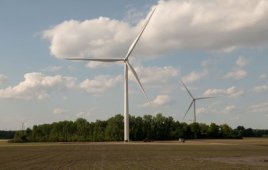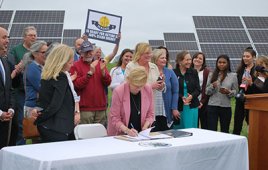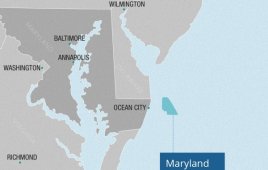Deanne M. Barrow / Publication / Norton Rose Fulbright
Adding an electric vehicle to a household doubles the electricity load. This creates both opportunities and challenges for utilities. Distribution lines may not be able to accommodate a large concentration of vehicles plugging into chargers at the same time. Utilities are focused on two concepts called V1G and V2G for managing load tied to electric vehicles. New business models are emerging, including leasing batteries to vehicle owners as surveys have shown vehicle owners are less likely to allow other uses for batteries — for example, to provide frequency regulation services to the grid — that they own than that they lease.

A panel of experts talked about how the move to electric vehicles, like the Chevy Bolt above, is affecting the power sector at an Infocast storage conference in San Francisco in early March.
A panel of experts talked about how the move to electric vehicles is affecting the power sector at an Infocast storage conference in San Francisco in early March. The panelists are Marc Fenigstein, chief product officer of electric motorcycle company Alta Motors, Matt Horton, CCO of electric bus company Proterra, Harmeet Singh, CTO of charging infrastructure company Greenlots, Russell Vare, manager of business development at Mercedes-Benz Energy Americas, and Abigail Tinker, vehicle-grid integration lead at Pacific Gas & Electric. The moderator is Deanne Barrow with Norton Rose Fulbright in Washington.
Electricity demand
- BARROW: To kick off the discussion, let’s talk about what the proliferation of electric vehicles will mean for electricity demand in this country. A lot of people in the room are in the business of selling electricity, but demand for power has been flat or declining in most parts of the country. Will electric vehicles change that and when?
- TINKER: From the utility perspective, Pacific Gas & Electric currently has the most electric vehicles of any utility. In terms of passenger cars, one in five electric vehicles sold in the United States is sold in our service territory. We had about 150,000 EVs registered as of the end of last year.
We hope within the next 10 to 12 years to see that number go up by 10 to 15 times. We are aiming for two million by 2030. Adoption has been strong and has outpaced our early expectations, but it is a heavy lift to get to two million.
The impact of that would be significant and is a reason why PG&E has made electric vehicles a central part of its strategy. We are making a big effort to promote EVs. They could account for as much as 5% to 10% of our total electric sales in 2030.
- SINGH: The most recent forecast by the California Energy Commission is that electric vehicles in California will consume between 4,500 to 6,500-gigawatt hours of electricity annually by 2030. They are a big opportunity.
-

Mercedes-Benz says its global targets are 25% electric by 2025. Based on the couple of million cars we sold in 2017, that would mean about half a million electric vehicles sold a year globally.
VARE: Mercedes-Benz global targets are 25% electric by 2025. Based on the couple of million cars we sold in 2017, that would mean about half a million electric vehicles sold a year globally. Mercedes-Benz is a part of Daimler. Daimler also has trucks, vans, buses — everything from smart cars up to Freightliner trucks — that are all undergoing electrification, too. We think this will have a significant impact on electricity demand when we look at our targets.
We are building a second battery plant in Germany, where Mercedes-Benz Energy is headquartered. Our Tuscaloosa plant is adding a battery factory and EV production line. We have plants in China, too. We have about $10 billion committed to R&D and production for electric vehicles, so it is a serious commitment. We are in about ninth place for passenger cars and are maybe the fourth or fifth largest global auto manufacturer when you add in all of our other vehicles. Other auto manufacturers are also moving in the same direction.
For the rest of the article: https://goo.gl/oepemc
Filed Under: Uncategorized




